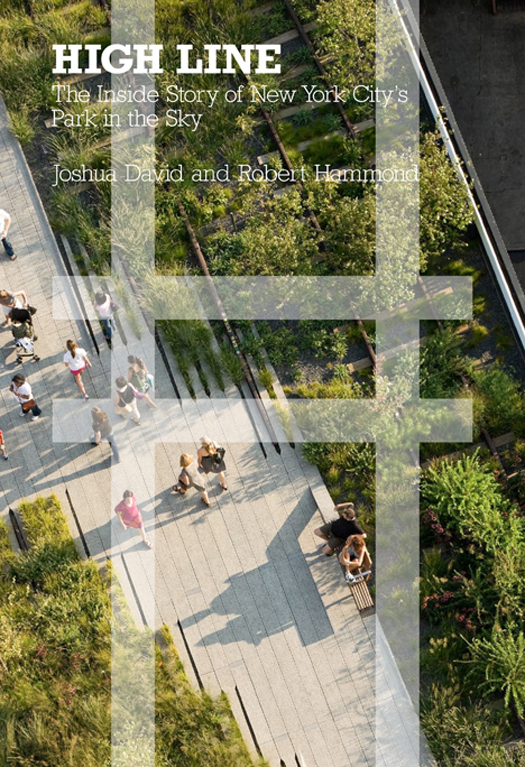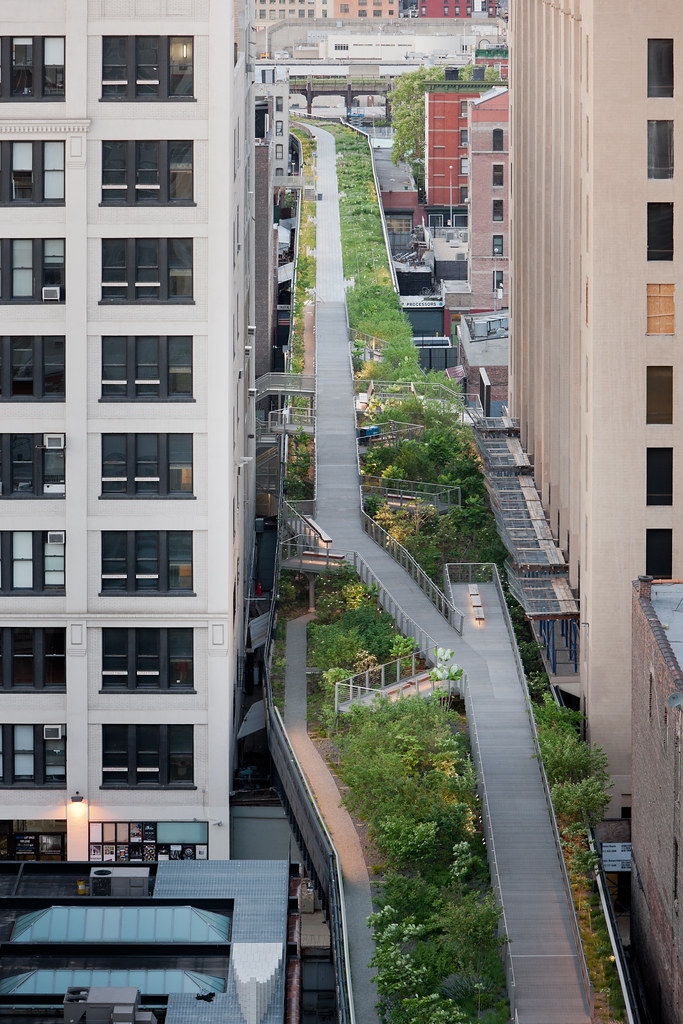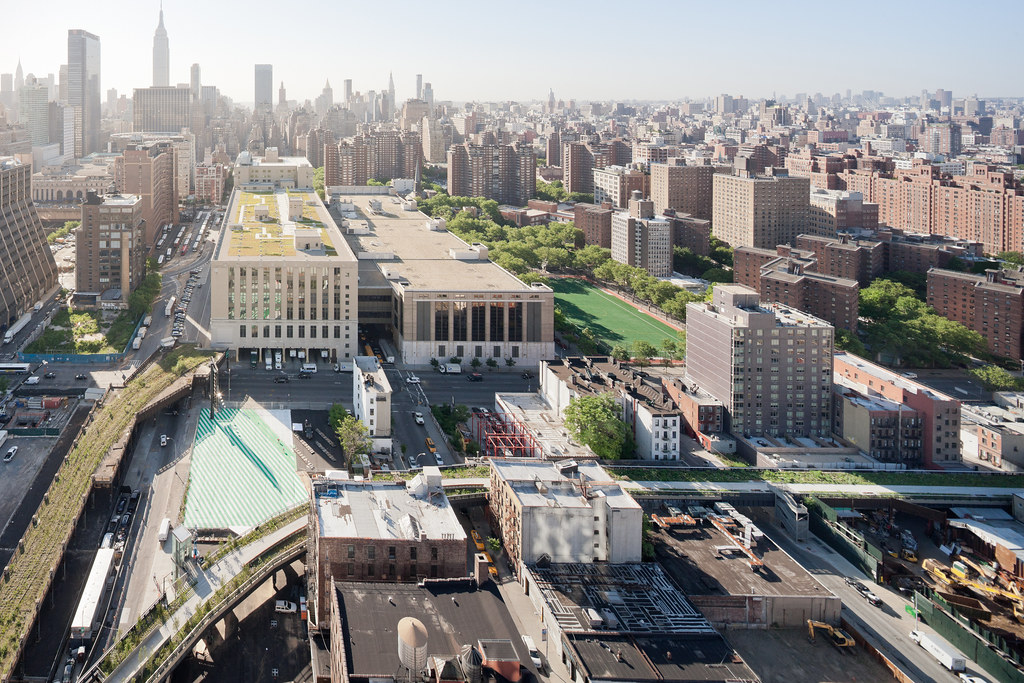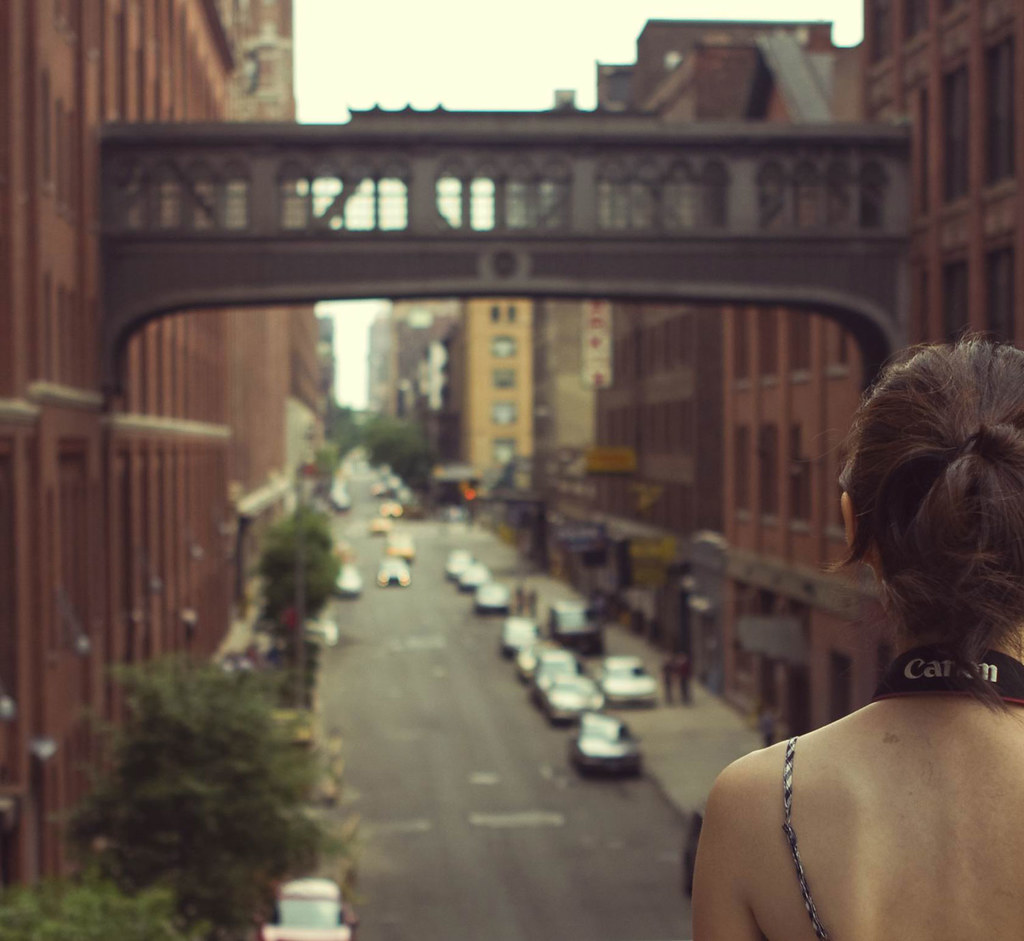
A new oral history of the making of the High Line.
The High Line isn't done yet, and its already the subject of history: an oral history based on interviews with Friends of the High Line cofounders Joshua David and Robert Hammond, just published by Farrar, Straus and Giroux.
For those following the High Line saga in New York City and design publications, I don't think the book offers many revelations, but it does combine a chatty, accessible story with a wonderfully illustrated photographic one. I've been wrong before about what other people know, and David and Hammond are, as always, charming tour guides. I can also think of two High Line books (at least) I hope the future holds: One, a complete oral history with all the voices (government, philanthropic, architectural) who made the park happen. Something more like the slim volume Work AC put together on their MoMA PS1 Public Farm 1 project.
And two, a deeper analysis of what the High Line and its proliferating linear brethren mean, for our cities, for our definition of park, for the profession of landscape architecture. Last year Witold Rybcynski published a doomy, gloomy Op-Ed in the New York Times about how the High Line means nothing:
American cities are always looking for quick fixes to revive their moribund downtowns. Sadly, the dismal record of failed urban design strategies is long: downtown shopping malls, pedestrianized streets, underground passages, skyways, monorails, festival marketplaces, downtown stadiums — and that most elusive fix of all, iconic cultural buildings. It appears likely that we will soon be adding elevated parks to the list.I agree with Rybcynski that the High Line's high-design, high-maintenence model would not be sustainable anywhere else, but I put it merely at one end of a spectrum that can include cheaper, tougher, just-as-exciting alternatives. As the book shows, it was not the biggest and most expensive design moves that made the park possible (though they make it special) but the most strategically deployed.
Here, with minimal comment, a set of quotations from the book that I think are key for understanding the High Line as a generative model rather than a one-off sculpture.

Phase 2 of the High Line, Iwan Baan, 2011 (courtesy Friends of the High Line)
On the power of the visual. First, what was.
Josh: We went north, to the square over Tenth Avenue. On one side, you could see the Hudson River, out to the Statue of Liberty On the other side, you could lean on the railing and watch the cars on Tenth Avenue flowing underneath you. Then we rounded a curve and discovered, stretching out in front of us, this incredible straightaway that went all the way from Seventeenth Street up to Thirtieth Street, thirteen blocks long, with a view of the Empire State Building. It was a shock to see how beautiful it was. There was this tremendous sense of space. I'd passed it a million times and I hadn't known it was there, hidden away in plain sight. You think of hidden things as small. That is how they stay hidden. But this hidden thing was huge. A huge space in New York City that had somehow escaped everybody's notice.There was a powerful sense of the passing of time. You could see what the High Line was built for, and feel that its moment had slipped away.Then, Joel Sternfeld's photographs of what was, that gave more people visual access.
Robert: Most people were moved by it. You brought them up, you showed it to them, and they would do anything for the High Line after that.
Robert: As soon as Joel saw it, he took me aside and said, "I want to do this. Don't let anyone else up here for a year. I will give you beautiful photos."I told him what we wanted was the money shot. I didn't know where the term money shot came from. I just knew it was the most important shot. I didn't know it was from porn.And Paula Scher's perfect logo, that made them look real.
Robert: Around that time, someone nicknamed us "two guys and a logo." On those original business cards, Josh and I listed our home addressses and home phone numbers. The logo made the High Line look like it was a real project. It also showed we were committed to design — we weren't just going to put some planters up there, put up some stairs, and call it a day.

Phase 2 of the High Line, Iwan Baan, 2011 (courtesy Friends of the High Line)
On the importance of non-threatening names. (Preservation = the third rail.)
Josh: Phil said it couldn't be the High Line Park Association, because the High Line might not end up being a park. We offered some other names we'd thought of — "preservation" this or "coalition" that: community group names — but Phil said you had to think of how City officials would look at you, how the real estate people would look at you. He said you wanted the name to be as neutral as possible, and he suggested Friends of the High Line. Friends groups are common: there are "friends" of all sorts of things. This name was friendly; it didn't have the word park or preservation in it — there were no lightning rods.Landscape architects, no longer handmaidens.
Robert: One of the questions we had was "Should the team's lead be an architect or a landscape architect? We decided the team could put whomever they wanted in the leadership position. If I could do it over again, I'd require a landscape architect to be in the lead.On the social life of long and narrow public spaces.
Josh: When we started working on the High Line, I held in the back of my mind an image of the High Line as a place where something like the Italian passeggiata could happen -- a place where people would come to stroll just for the sake of strolling, to be among their fellow citizens, to smile and flirt, to check out one another's outfits, to walk with parents after an early dinner, or to meet up for a date.

Photograph by flickr user brian oh (courtesy Friends of the High Line)
And on loss, from an anonymous comment in response to a Grand Central exhibition of ideas.
"The High Line, untouched, should be preserved as a wilderness area. No doubt you will ruin it. So it goes."They did ruin it, of course. Robert says, "After the rails were lifted and stored, the workers started scraping everything else away. As they dug, you realized how fragile the plant life was. It was just a thin layer, just inches deep, rooted in the gravel ballast... But you could keep that original landscape only if no one went up there." But it is clear from reading this book, and from the experience of the High Line, that the preservationist impulse — the history of the photographs, the question of the name, the beauty of the volunteer plants — conditioned what was built instead. The High Line is a long way from a quick fix, but it also isn't a dead end.
